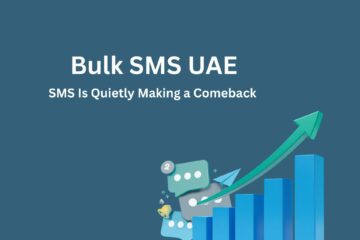
Sending an SMS campaign sounds simple. You gather a list of numbers, type a short offer, and hit send. But if you’ve ever run a serious campaign, you know it’s not that straightforward. Some messages vanish into inactive numbers, others go out at the wrong time, and sometimes you burn through thousands of dollars with very little return.
That is the contrast between firing texts and SMS Campaign Management in practice. In 2026, companies must deliver more than that, they should also deliver precisely, they should deliver personalized, and measurable outcomes. Here the guide takes you through the steps of managing SMS campaigns step by step, with ample examples, tips and information given with real-life businesses.
What Exactly is SMS Campaign Management?
At its core, SMS Campaign Management is the process of planning, sending, and fine-tuning text messaging campaigns so they don’t just reach people—but get results.
That means:
- Building a clean, segmented contact list.
- Crafting short but powerful messages.
- Choosing a platform that can actually handle scale.
- Staying compliant with regulations.
- Tracking what worked (and what didn’t) so you don’t waste money.
Consider it as a guest of an event. It is not a matter of filling a room with all your friends and wishing you had been much better-off-you send out the invitations to the right people at the right time and then you count the people who actually attended.
Why SMS Campaign Management Still Matters in 2026
Email is crowded. Social media is noisy. Apps send too many push notifications. Yet SMS still cuts through.
Here’s why businesses invest in proper SMS management:
- Open rates are still unmatched – over 90% of texts are read.
- It works across demographics – not everyone checks email, but almost everyone checks texts.
- It’s instant – most SMS are opened within 3 minutes.
- It pairs with new tools – SMS works great alongside WhatsApp Business API, push notifications, and email.
According to a Statista report, mobile marketing spend is on track to pass $400 billion globally by 2026. SMS remains a major chunk of that because it’s universal and simple.
Step 1: Have clarity about your goal.
The major error that most businesses commit is to send messages without any purpose. “Just get the word out” isn’t enough. You need to define exactly what success looks like.
Objectives could be:
- Driving sales for a weekend promotion.
- Reminding customers of appointments.
- Sending OTPs for secure logins.
- Boosting website visits or app downloads.
Real Example:
A fitness studio in Chicago used SMS not just to advertise, but to drive local footfall. Instead of a generic “Sign up today,” they ran a targeted campaign: “Free 7-Day Gym Pass – valid for residents within 5 miles. Show this text at reception.” Their goal wasn’t just sign-ups—it was filling treadmills.
Step 2: Build and Segment Your Contact List
Your list is the engine of your SMS campaign. If it’s dirty or outdated, you’ll waste money sending texts that never get read.
Best practices:
- Collect numbers with clear opt-in consent. Don’t buy shady lists.
- Segment contacts by location, purchase history, or interests.
- Clean your list regularly—drop invalid or inactive numbers.
Analogy:
Imagine running a coffee shop. If you have 1,000 customers but only 400 live nearby, why send everyone a “free latte today” message? Segmentation will put the right people in the right place with the right message.
Step 3: Select the Messaging Platform.
The platform you use matters. It’s the difference between smooth delivery and chaos. A good SMS campaign management platform will:
- Support bulk SMS service at scale.
- Integrate with tools like WhatsApp Business API.
- Provide analytics to be able to monitor delivery and clicks.
- Remain in tune with international rules (TCPA, GDPR, TRAI).
Global Example:
SMSala, a leader in messaging solutions, helps brands send millions of SMS daily. Their infrastructure ensures messages don’t just leave your system—they actually land on devices. For companies that need both bulk SMS and global reach, providers like SMSala make the difference between guessing and knowing.
Step 4: Compose Messages that actually get read.
You just have 160 characters so each word matters.
Tips:
- Keep it short. Cut the fluff.
- Add personalization (name, location, recent purchase).
- Create urgency—limited-time offers work.
- Always include an opt-out option if required.
Bad Example:
“Buy now! Huge sale at our store. Don’t miss out.”
Better Example:
“Sarah, your 20% discount on running shoes ends tonight. Shop now: [link]”
See the difference? The second feels personal, urgent, and clear.
Step 5: Automate and Time Your Campaigns.
Timing will or will not break SMS campaigns. Nobody desires a marketing text at 2 a.m.
Guidelines:
- Advertisements: In the late mornings or evenings.
- Reminders of appointments: 24hours and 2hours ahead.
- Urgent alerts: Send immediately.
Automation helps here. With most platforms, you can schedule campaigns or activate them through the actions of users.
Step 6: Measure Performance Like a Pro
Don’t just send SMS—track what happens. Metrics worth watching:
- Delivery rate – Did messages actually go through?
- Click-through rate (CTR) – Did people act?
- Conversion rate – Did it lead to sales?
- Opt-outs – Are you annoying people?
Case Example:
A retail chain in India tested two different SMS formats: one with a long URL, one with a short link. The short link campaign had an 18% higher click-through rate. Small tweaks matter.
Step 7: Continuous testing and improvement.
SMS isn’t “set it and forget it.” You need to keep testing.
- Try different CTAs: “Shop Now” vs. “Claim Offer.”
- Test timing: Morning vs. afternoon.
- Compare formats: Plain text vs. short links.
Over time, these small optimizations can double your campaign ROI.
Bulk SMS Service: The Backbone of Campaigns
If you’re running large-scale campaigns, you need a bulk SMS service. It lets you send thousands—or millions—of texts at once.
Advantages:
- Lower costs per message.
- Reliable delivery even at scale.
- API integration for automation.
Combine bulk SMS with HLR Lookup (number validation) and you’ll avoid wasting money on inactive numbers.
Where WhatsApp Business API Fits In
While SMS is universal, WhatsApp Business API adds a new dimension. It allows:
- Two-way communication.
- Rich content like images, PDFs, and buttons.
- Verified business accounts for trust.
Example:
A travel agency notifies about the flight confirmations through SMS but then on WhatsApp, e-ticket is sent and customer service is provided. SMS for urgency, WhatsApp for detail. Perfect combo.
Compliance and Data Privacy
Rules differ across regions:
- GDPR (EU): Consent should be expressed.
- TCPA (US): Embark on unambiguous instructions on opt-out.
- TRAI (India): Promotional rules.
Never skip compliance. Fines can be huge, and your brand reputation takes a hit.
Tools Worth Considering in 2026
- SMSala – Great for global bulk SMS.
- Twilio – Popular API-driven platform.
- Clickatell – Good for omnichannel campaigns.
- Infobip -Integrates SMS with other communication systems.
Select according to your scale, area, and budget.
Real Stories: SMS Campaigns That Worked
- Retail: In the UK, a chain operated a flash sale in 48 hours. Text alerts boosted store traffic by 34%.
- Banking: A Nigerian bank reduced OTP delivery failures by 12% after cleaning inactive numbers.
- Healthcare: Automated SMS reminders reduced missed appointments at a Dubai hospital by 27 percent.
Looking Ahead: SMS Campaign Trends in 2026
- AI anticipating when and how to say something to a user.
- Deeper WhatsApp API and SMS integration.
- Richer formats with RCS messaging.
- Smart cross-channel co-ordination (SMS + email + push).
- Green communication (sending less, but improved messages).
Mistakes to Avoid
- Over-messaging. People unsubscribe fast.
- Ignoring time zones in global campaigns.
- Forgetting opt-out links.
- Using one-size-fits-all messages.
FAQ
Q: What frequency of SMS campaigns should I have?
Most brands do it one or two times a week. Test your audience.
Q: Is it possible to use SMS in connection with WhatsApp?
No–urgency is SMS, rich content is WhatsApp.
Q: Is SMS still worth it in 2026?
Absolutely. Open rates are over 90%, far higher than email.
Q: What’s the cost?
Depends on region and volume. Bulk SMS service reduces per-message cost.
Conclusion
Managing SMS Campaigns in 2026 does not just involve texting. It is about getting to the right people, delivery of messages that resonate, timing them and never relenting.
Global messaging is also achieved through providers such as SMSala through the bulk SMS service and compliance capabilities that allow campaigns to continue running without any friction. Combine tools such as WhatsApp Business API and you have a strategy that satisfies both straightforward and sophisticated customer demands.
Perhaps the biggest lesson in this is this; SMS is not dead. It is sharper than ever,–you see how to do it.


